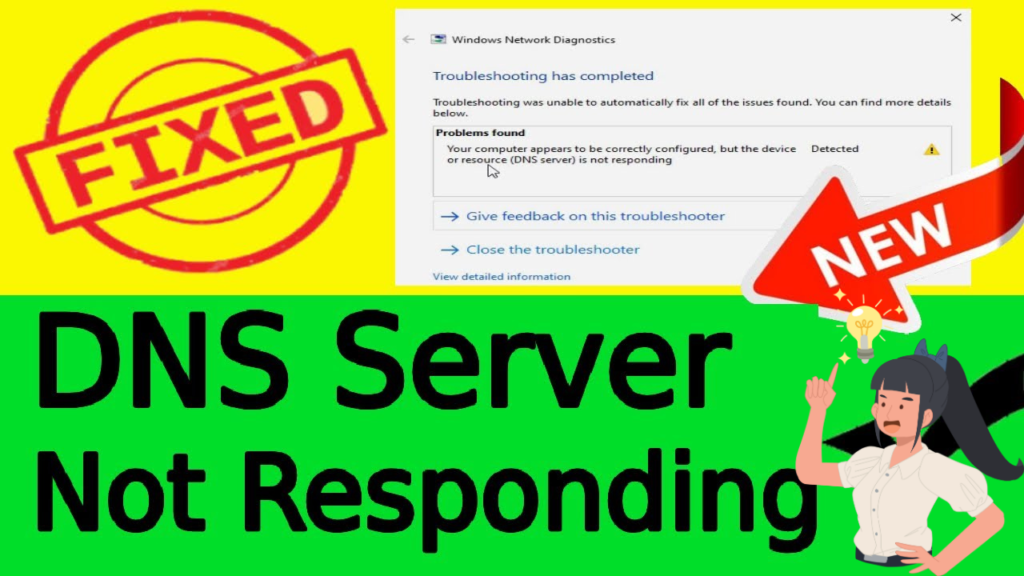The DNS server not responding is a common error you may face while working on your Windows or Mac system. The simple meaning of this issue is that you are currently unable to use your internet services. This may take place due to several issues including a temporary network error, some internal system issues with your router, or bad weather conditions responsible for signal interruptions.
There are several reasons behind the DNS server not responding to the issue, similarly, there is more than one easy solution to resolve the issue on your own. Here is a complete guide for you to understand the DNS server not responding problem, the main reasons behind it, and some handy fixes. So let’s get started!
Understanding DNS Server Not Responding Error
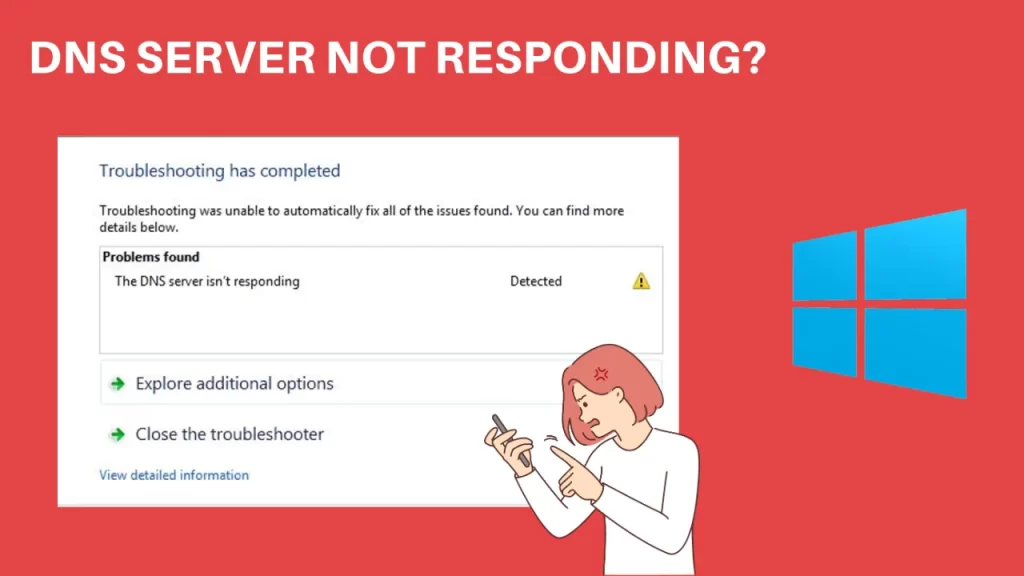
Imagine you are on the verge of defeating your final enemy in a nerve trying non-stop gaming action on your gaming console, and suddenly you see the message on the screen saying DNS server not responding, what would be your take? This would end up all your gaming excitement and you feel simply helpless.
This DNS server not responding error is a common experience in internet and online surfing. DNS is a linking bridge to connect you from domain names to numeric IP addresses and land you on the right website. DNS means Domain Name System like www.amazon,com, www,netflix.com. There is a complete string of complex numbers and symbols behind these simple-looking DNS. Whenever a user posts a specific web address in the browser, it reaches first at your DNS server first. In the second step, this DNS is transformed into an IP address. And sometimes when this DNS server fails to process the name resolution system. It ends up showing you the DNS server not responding to the error.
Why Do You Have DNS Server Not Responding to Error: How to Fix It?
1. Refresh Your Internet Connection
One of the main reasons for faxing this error is your poor internet connectivity. In such cases, your modem or router may be having some issues and you are unable to have stable surfing.
Solution
To resolve this issue you need to check other devices working on the same internet connection like any other tablet or mobile. If you find the other devices working well, then it’s your laptop or PC that you are using right now for working. Still, you can try to restart your modem or router by unplugging it for 30 seconds. You have to wait for that much time patiently, Now plug it back into your laptop or PC and check if the issue is resolved.
This solution works in most of the cases as it refreshes your internet connection through your router.
2. Change Your Search Browser
In some cases, it’s your web search browser that may bring you the DNS server not responding to the issue.
Solution
Simply switch to another web browser to confirm whether the issue is originating from your browser, if you are using a Chrome browser, try another one like Firefox or Safari. If this fixes the issue then your old browser was creating the DNS server not responding to the issue. You need to clear the cache from this browser and reinstall the app again.
3. Get Closer to Your Internet Connection
Sometimes you experience the DNS server not responding due to physical hurdles like walls, doors, etc. You lose the stability of your internet connection and face a lag screen or disconnection.
Solution
The solution is simple: Try to get closer to your internet connection to receive direct signals without interruptions. Another way to resolve the issue is to connect your device to the ethernet cable. This ensures a more stable connectivity.
4. Check Your Network Issues
Sometimes certain issues with your network may cause this connectivity issue.
Solution
- You need to go to your laptop or PC control panel and find out the Network and Internet options.
- Here you will click on the Network Sharing option and click on the Troubleshoot icon
- This will run through your system and bring out the issues within your device.
- Next, it may suggest some additional troubleshooting/
- Wait for the process to end
This usually resolves the issue and you restore your connectivity.
5. Try Your Device Safe Mode
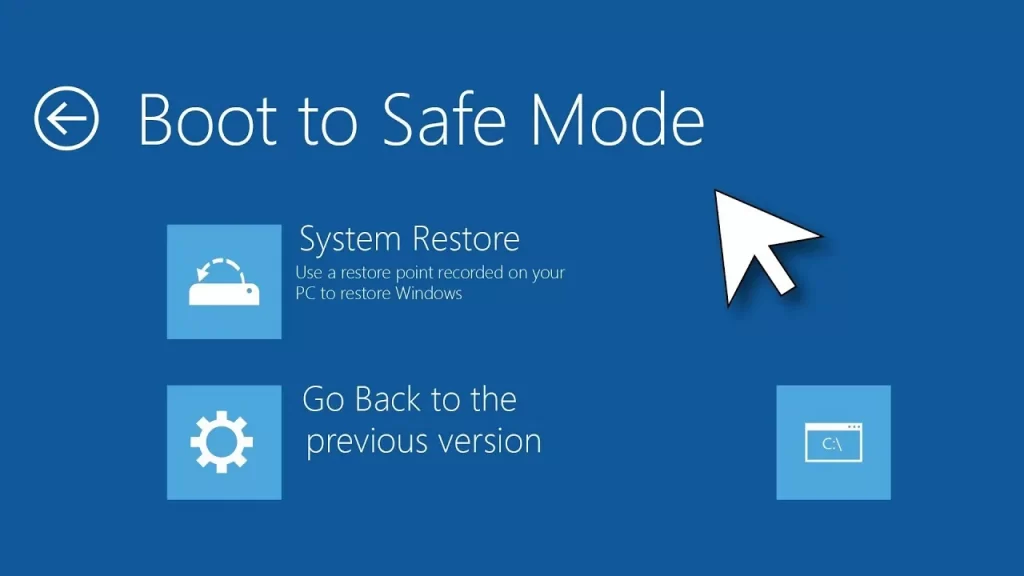
You may be having this issue of the DNS server not responding when some error takes place in your operating system.
Solution
To fix it here are some steps for you to follow:
- Restart your computer and find out the Choose Your Option window.
- Here you will see the Troubleshoot Option and an Advanced Options
- Choose the Startup Setting Option and click restart.
- Press F5 to move to the Safe Mode with Networking.
If you see that your computer is no longer facing the DNS server not responding to the error, then it means some third-party software is responsible for this problem. Simply delete this application from your device and get started again.
6. Review Your Firewall or Antivirus Blocking Options
Sometimes you have this problem due to an overprotected firewall or antivirus software blocking your DNS requests.
Solution
To resolve this issue, check your security software settings, especially look for DNS-related settings, and make sure that the DNS requests are allowed. Now run your network diagnostics again and visit the website to check its status.
7. Check Your DNS Settings
In some cases, there is an incorrect DNS server used by your device and you see this DNS server not responding to the message.
Solution
As we have already discussed, your DNS settings control the way your computer interacts with the internet connection. This is an automatic procedure. If there is an interruption in this interaction, it may lead to facing this issue. And if you find out that this automatic function is not working well, then you need to fix it manually. Just follow the steps below for this:
- At your control panel find out the Network and Internet and then the Network and Sharing Center
- From here you will click on the Change Adaptor setting option
- Right-click on your WiFi network and choose the Properties option
- Find out the Internet Protocol Version 4 (TCP/IPv4) option and click over it
- Here you will see two options to set it up: Manual and automatic
- Choose the one that you have not been using right now
- Click OK and save the settings
This is all! Now look at the device you are trying to fix for the DNS server not responding
8. Clear Out Your DNS Cache
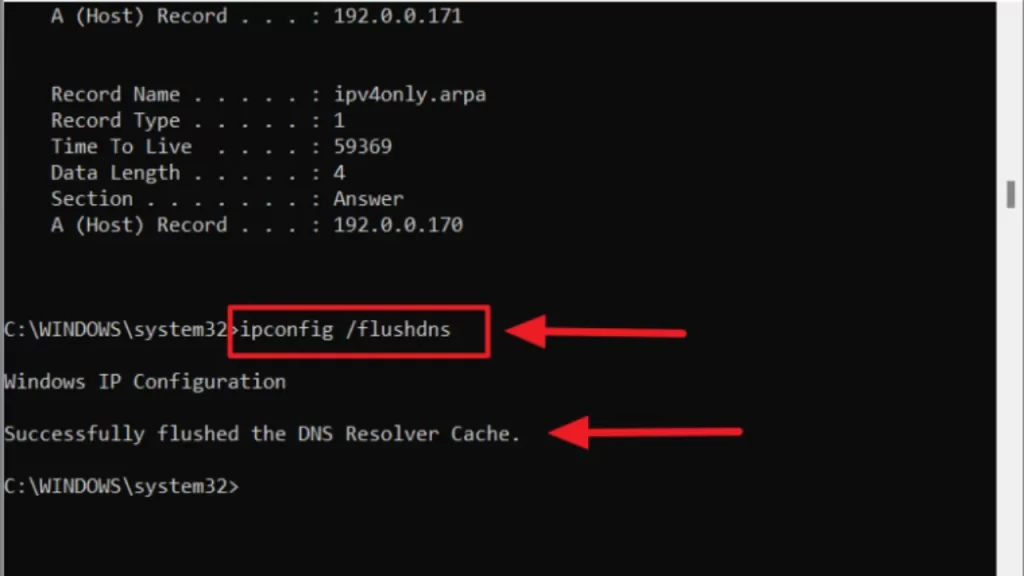
Your DNS server may get overloaded with the cache of programs and apps you are using on your PC or laptop. This may be the reason behind the DNS server not responding to the issue.
Solution
- The solution is not that difficult. Follow the instructions below:
- Move to the Windows search bar and type cmd.
- Press the enter key.
- You will be directed to the Windows command prompt area.
- Here type ipconfig/flushdns and press the enter key.
If this process is completed successfully, you will see a message saying: Successfully flushed the DNS Resolver Cache.
9. Check Your Network Adaptors
Sometimes you have this issue when there are several unused connections linked to your internet.
Solution
To fix it you have to follow the simple steps mentioned below:
- Go to your PC control panel and move on to Network and Internet, then Network and Sharing Center.
- Find out the Change Adaptor settings in the left column and click over it
- You will see the network Connection page. From here click on the Local Area Network and all the other connections you are using for only a short time.
- Disable them all.
10. Check The Issue With DNS Server Address
The issue of the DNS server not responding comes due to some problem in the DNS server address.
Solution
The solution to this issue is easy, just follow the steps below:
- On your device control panel menu go to the Network and Internet option.
- From here click the Network and Sharing Center option.
- Here click on the active connection like Ethernet or WiFi.
- Now type Properties in the dialogue box.
- You will see a list under the name “The connection uses the following items”.
- Choose the list item named “Internet protocol version 4 (TCP/IPv4)”,
- Click on the “Properties” button from the menu below.
- Here again, you will see another dialogue box with two options: Preferred DNS Server and Alternate DNS Server.
- Here you will click on the “Use the following DNS server addresses” radio button.
- Here again, you have two choices: To use Google’s Public DNS server, enter 8.8.8.8 in the field labeled “Preferred DNS Server” and enter 8.8.4.4 into the field labeled “Alternate DNS Server”. To use Cloudflare’s DNS server paste the Cloudflare DNS address 1.1.1.1
- When you are done with this process, ensure that the “Validate settings upon exit” checkbox is checked.
- To save this setting, click on the OK button.
- Now restart your computer to see the results
Some Other Ways To Fix “DNS Server Not Responding”
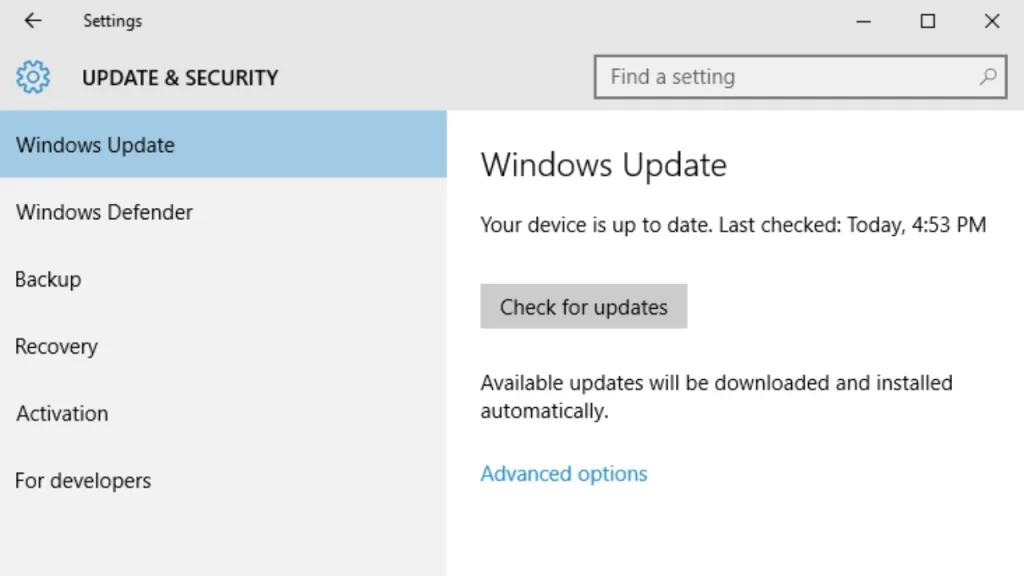
Besides trying out the solutions we have explained above, you can resolve the problem by the following methods:
- Contact your ISP company
- Disable peer-to-peer Windows 10 updates
- Check your IP address and network protocols
- Get updated network adapter drivers
- Check your router or PC for any malware
Conclusion
The problem of DNS servers not responding is a common experience. There is more than one reason behind this issue and similarly more than one solution to fix it. You can get help from the solutions mentioned above in our guide and get it fixed according to your specific requirements.
FAQs
1. What is the solution to fix the DNS server not responding in Windows 11?
You can solve the problem in several ways like, changing your search browser, restarting your device in safe mode, disabling your VPN or antivirus software, etc.
2. Why does your server go down?
There are several reasons for your server getting down. It may be due to some issue in your internet router, some settings are upset in your device, or your connection is interrupted by some VPN or antivirus software,e, etc.
3. When should you change your DNS on the router?
If you are experiencing continuous slow uploads and the server runsath an interrupted speed, it’s time to change your DNS on the router.

